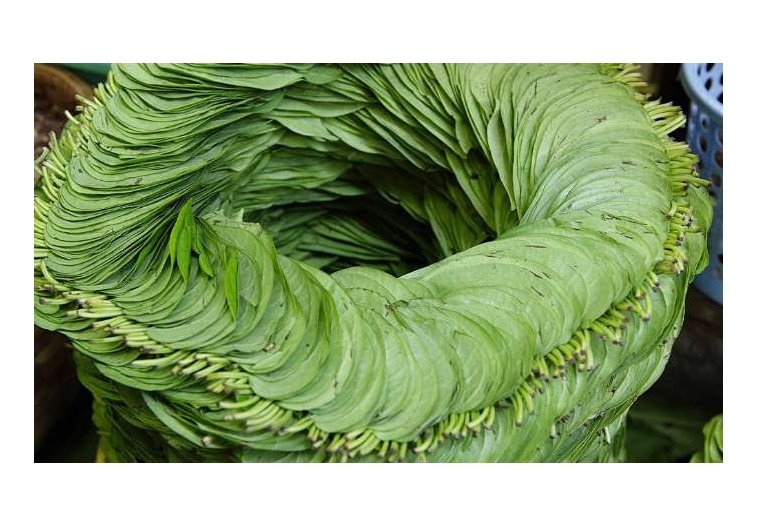- May 21, 2025
Last updated on September 24, 2025

Betel leaf – known in Tamil as Vetrilai Paakku – is more than just a leaf. It is considered a divine herb with the power to keep the body healthy, remove premature aging, and protect us from illness.
In Hindu tradition, betel leaves hold a sacred place in festivals, religious ceremonies, vows, and weddings. It is not just a ritual accessory – it carries deep symbolic meaning.
In Manasa Puja (mental worship), there’s a touching verse:
“I offer these fragrant betel leaves for chewing, Mother, please accept them with grace.”
In temples, the stalk of the betel leaf is pinched, water is sprinkled, and camphor-lit betel offerings (Karpoora Thamboolam) are offered at the end of a puja.
Goddess Devi is associated with the color green, and Lord Shiva with white. When the green leaf meets white lime, it turns red – a symbol of Shakti (divine energy). Just as there is no Shiva without Shakti, no ritual is considered complete without betel leaves.
Even the word for a confirmed wedding arrangement is Nischaya Thamboolam – “confirmed with betel leaves.” In the past, once betel and areca nut were exchanged, no one dared to break the promise.
During Shraddha (ancestral rites) and other rituals, donors sprinkle water over betel and areca nut before offering them. This practice is followed across India.
In North India, during Diwali Lakshmi Puja, priests place three betel leaves and three areca nuts to symbolize Lakshmi, Saraswati, and Durga.
At weddings, after the Mangalsutra ceremony, guests are sent off with a Muhurtha Thamboolam (betel leaf offering). The bride’s brother ceremoniously folds and offers betel leaves to the newlyweds. Betel is also used during Nalangu (wedding games) and the first night rituals.
Even literature reveres it – in Kamba Ramayanam, Sita laments in captivity, wondering who will lovingly fold fresh betel leaves for Rama to chew.
In Mahabharata, Krishna is said to have received the first betel leaf offering during Yudhishthira’s Rajasuya Yagna.
Saints and poets have linked betel to divine grace. Nammalvar in Divya Prabandham sings that food, water, and betel are all God’s blessings. Tamil poet Kalamegha Pulavar is said to have been blessed by Goddess Akilandeswari herself, who placed divine betel in his mouth – transforming him into a spontaneous poet.
Betel leaves are believed to have powerful medicinal and spiritual properties. Offering betel to God is said to make prayers more effective and reach the divine completely.
A betel offering, or Thamboolam, is full of symbolism:
No matter how many offerings you make, without betel leaves, the ritual is considered incomplete. In weddings and pujas, betel symbolizes auspiciousness, prosperity, and the blessing of Goddess Mahalakshmi.
Betel leaves are rich in medicinal value – they aid digestion, refresh the mouth, and have antiseptic properties. This is why our ancestors made betel an everyday practice.
Key Takeaway
Betel leaf is more than a leaf – it is a symbol of victory, prosperity, and divine connection. From temple offerings to wedding rituals, from ancient poetry to daily life, Vetrilai Paakku represents auspiciousness and completeness.
Neglect leads to obstacles – wholehearted effort leads to success.